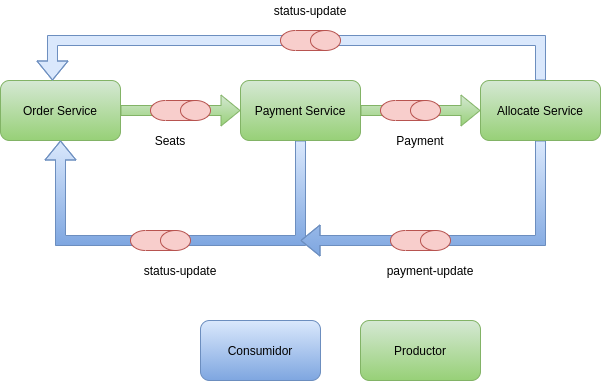This project is a simple example about how to make a saga architecture in Quarkus with Apache Kafka and H2 as a database in memory.
If you need more information you can take a look into: https://refactorizando.com/patron-saga-quarkus-kafka
This example about Saga in Quarkus consists of three services, every service works as and independent service and all services together reach a goal. The communication between them is based in event sourcing, which means, that every time a state changes in the microservice, a new event will be triggered and sent to a microservice.
We can say that a Saga Pattern is a sequence of local transactions, and every transaction update data inside of a single or independect service.
So we are going to have three microservices, order-service, payment-service and the last one allocate-service.
And every service communicate each other through events using kafka.
This is the entry point in our architecture. This service expect a seat in a json format to start a new transaction to reserve a seat in the cinema. When a user make a new reserve a new procces start and the seat is locked, then a status change and a new event will be triggered to make a payment. If every step goes well then a seat will change it status to OCCUPIED.
In the case of something fails, for example you are making a new payment and the client has not enough money in the account, then a compensation will start to restart seat status. We are going to have three different status: FREE, LOCKED and OCCUPIED.
The goal of this service is save a new payment in the database. When a new event from order service is received then create and save a new payment.
If the payment is saved successfully then a event to change the seat status is sent. In other case a compensation procces start to make a rollback, delete the payment and change to FREE the status seat.
Allocate service is going to be our last service involved in our architecture. When a payment is saved, then a new event is triggered. Allocate Service processes that event and change the status seat to OCCUPIED and notifies this change to order service.

